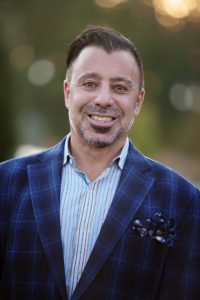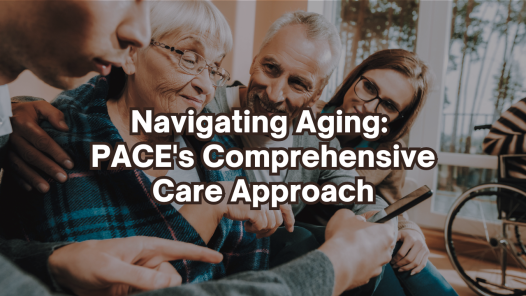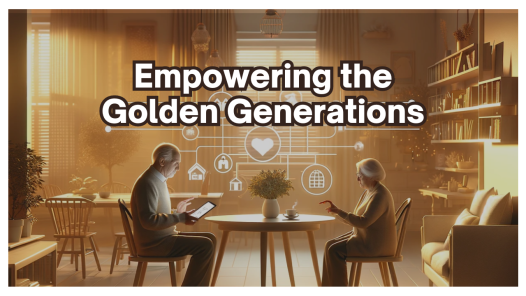
Please welcome Steve LaForte, he has a 22-year career as a structured finance attorney, C-Suite Executive and Entrepreneur in the post-acute care and senior housing industries. Over that span he has had the privilege to assist some of the largest companies in those industries on growth and financing initiatives, having participated in over $10B of transactions in his career.
Steve has also founded and grown 3 national companies in the post-acute care industry, providing care to over 1000 residents. Currently, Steve is Director of Strategic Operations and General Counsel for a growing Northwest post-acute care provider, Cascadia Healthcare, where, on a daily basis he is grateful to have the opportunity to further Cascadia’s mission to be “Force for Good” in providing care for over 1000 residents in 18 facilities across 4 states.
Steve makes Boise, Idaho his home with his wife, Laura, also a healthcare professional, and they have 3 wonderful children, Isabella, Talia and Santo (and 2 labrador retrievers, Brunello & Giallo).”
The COVID-19 pandemic is exposing our healthcare system and our industry to be very fragmented. So what have you seen in the evolution of senior living over the last 30 years? Are the nursing homes shaped solely by government reimbursement? Is that adequate in providing the quality of care for someone with the acuity profile?
Today, nursing and rehabilitation facilities are funded through four sources. Medicare, Medicaid, Quality Assurance Assessment Program and Patient Pay. Medicare Part A is skilled nursing facility care. It’s provided to recipients in need of skilled healthcare services that are rehabilitative or restorative. In the current regulatory system, is it more reactive and is it servicing the flaws in the midst of the current situation?
Joins us as we ask Steve his thoughts and experiences on senior care during this COVID-19 pandemic.
Steve’s Specialties: Transactions in the Real Estate, Corporate Finance, Structured Finance, Health care, and Long Term Care/Senior Housing industries.
Hanh Brown: [00:00:00] Hey, how’s it going? Steve?
Steve LaForte: [00:02:30] Everybody in my family’s healthy, my wife works at one of our facilities for Cascadia is a director of social services.
[00:02:40] So she’s out on the front lines every day. I have fully embraced sheltering at home and I’ve got two teenagers and one 21 year old who I’m doing it with. They would like me to go back to the office, but I’ve sheltered at home. I’m used to it. And on a Cascadia basis, we have 18 facilities and we have. [00:03:04] 1500 employees and a thousand residents and zero positives to date. We’ve got great people. We’ve got great clinical. And we also are traversing under a little bit of a lucky star because it’s tough out there. And if it gets in, it’s like wildfire, but so far so good.Hanh Brown: [00:03:23] The pandemic is exposing our healthcare system and our industry to be very fragmented.
[00:03:29] So, what have you seen the evolution of senior living over the last 30 years and are the nursing homes shaped solely by government reimbursement? Is that adequate in providing the quality of care for someone with the acuity profile?Steve LaForte: [00:03:43] Interesting. And it’s hard. I think when I look out there, somebody recently in the media characterized our industry as fragmented and broken, and the current crisis is exposing all the flaws in the system that’s been created.
[00:04:04] And I wholeheartedly agreed with that person. We’ve had a system that is evolved over 30, 40 years. In a really fragmented way. Wasn’t constructed in an intentional way. It’s changes in the law and changes in the reimbursement and Ben reactionary and not visionary and not forward-looking. And so we come to this place, you know, if you want to say three months ago, early February of 2020, and we have an industry that’s shaped. [00:04:37] Solely by government reimbursements there aren’t adequate to provide the quality of care that’s necessary. And acuity profile today.Hanh Brown: [00:04:47] Nursing and rehabilitation facilities are funded through four sources, Medicare, Medicaid, quality assurance assessment program, and patient pay. Medicare part a is skilled nursing facility care.
[00:05:02] It’s provided to recipients in need of skill healthcare services that are rehabilitative or a store tip. So the current regulatory system, is it more reactive? And is it servicing the flaws in the midst of the current situation.Steve LaForte: [00:05:19] it’s grown steadily, but dramatically over the last 30 years, a regulatory system that’s been constructed in a reactionary basis that favors punitive measures over.
[00:05:34] Collaborative solution care, outcome driven measures. And that brought us to reword. We were an industry in crisis in February, dealing with a lot of things from the reimbursement, from the regulatory, from new reimbursement systems, but where none of it right to create real change and meaningful change. [00:05:56] And then we came into this crisis and capacity. You have a. Worldwide pandemic. And we’re at the front lines in all these cracks and fissures and fragmentation in an industry that’s at the front lines to the bank, gated are now exposed and despite the best efforts. And I think that there are a super majority of good operators out there and a super majority of operators who follow infection, control procedures and. [00:06:31] Who should have been ready, but they’ve got both arms tied behind their back because of the regulatory structure and the reimbursement structure.Hanh Brown: [00:06:41] So before the pandemic, there are huge issues regarding the regulatory system. Now compounding with more opposition, such as keeping the residents and the staff safe, keeping the businesses financially sustainable, and also combating the news media that long-term care space is an unsafe for residents.
[00:07:03] The shortage of personal protective equipment, lack of testing and lack of testing methods that are not as efficient or accurate. All of which multiply the transmission of this virus. There’s lack of countability at the state and federal level. It’s a multi-layer problem that needs support from all levels. [00:07:22] The CMS, the state server agency, the state department of health partners across a continuum of care. Hospitals assisted living home health, all need to be in partnership and collaborating and coming up with a solution. But meantime, the frontline staff and elderly are devastated in their lives are put at higher risk.Steve LaForte: [00:07:43] I think we’re all seeing where we are in a place where on the front lines where our population, the most vulnerable is decimated by the crisis when it gets in our buildings and we’re sitting here and we’re screaming for help. And we have SOS is out there and you’ve got. Mark Parkinson from the American healthcare association and Katie slows Smith from leading age out every day in the press during attention to what’s going on and what our needs are.
[00:08:17] And you’ve got the government not responding. So you’re taking an industry in crisis. You’re tossing a pandemic over it. You’re putting it at the front lines. Really as a society, we’re not doing enough to support it. And then the New York times wants to write about all the bad things that we’re doing and you toss up your hands. [00:08:39] What else are we supposed to do? Help us help our most vulnerable population. This suggestion I have in the vision that our organization Cascadia healthcare has is collaboration. I think there needs to be for better or worse. There needs to be a multi-layered scheme. Healthcare is regulated at a state level and at the same time, the reimbursement system that we’ve structured is driven primarily at the federal level. [00:09:10] Was even with Medicaid, the super majority of the money comes from the federal government. So when we look at it, what we would love to see is CMS. The state survey agencies, the state departments of health and our industry. And at the same time, our partners across the continuum of care, whether it’s hospitals assisted living home health partner in collaborating on what the solutions are, none of us exist in a silo. [00:09:43] And if our relationships are only conducted in a silo, then you have. A problematic situation of fragmentation. And I think you’re seeing it play out now. So you have our industry looking to the federal government on the one hand for relief and looking to the state government on the other hand for relief. [00:10:04] And we have States telling us we don’t have the money look to the feds. And then we have the federal government, you know, as late as 36 hours ago, you have the president of the United States at a press conference saying that he supports testing for all residents and staff in nursing homes. Go talk to the governance. [00:10:28] There’s no ownership. We don’t necessarily want or demand any one party step up. We would just like to work with everybody because we all have a stake. We’ve all committed as a society to care for our seniors and to care for our most vulnerable populations. And if we’re going to do that effectively, we need to work together and we can’t go to the States and have them point to the feds.Hanh Brown: [00:10:56] As of may only a very small percentage of residents and staff have been tested because the federal and state governments have not made nursing home a top priority. So nursing homes have been ignored. Two-thirds of nursing homes still don’t have the easy access of test kits and they’re struggling to obtain sufficient resources, nursing home leaders who have developed good relationship with their local hospitals and health department seem to be having better luck while the rest must fend for themselves.
[00:11:25] So at Cascadia, your communities have zero COVID. So how did you work in collaboration with your local key stakeholders? Did you folks come up with a plan with the hospitals to have a locked off ward where you can quarantine people?Steve LaForte: [00:11:40] You know, I think, again, it goes to the lack of effective collaboration amongst the various stakeholders.
[00:11:49] I’ll tell you something that we did to try and get ahead of this in our communities. And especially we have. Eight facilities in the greater Boise, Idaho metropolitan area. And six weeks ago, we went to the hospital systems and we said, how do we come up with a plan to work together? If you’re going to have COVID patients come in and you need to discharge them to skilled facilities, how do we create locked off wards? [00:12:20] Where we can quarantine people and alleviate your burden and do it safely. And we went to the department of health and said the same thing. We actually had some fairly good discussions and fairly decent collaboration. Now we haven’t had a search spread in the greater Boise area. So the plans that we started to put into place didn’t need to be affected.Hanh Brown: [00:12:46] So here’s a snapshot of what States are doing to have nursing home tests for COVID governor of West Virginia. Jim justice is mandating testing for all nursing homes without conditions. The Detroit mayor, Mike Duggan ordered tests for all 26 nursing homes in the city. Using the new kits, they can provide results in 15 minutes.
[00:13:07] Massachusetts abruptly halt the program to send kids directly to nursing homes. This week in may, after 4,000 of them turn out to be faulty, several States, including Colorado, Florida, Maryland, Tennessee, and Wisconsin have this spatch national guard testing strike team. Since there are no clear direction and support, you really need to collectively work together at your local levels, getting all the key stakeholders together and collaborate.Steve LaForte: [00:13:36] But I, I think it goes to in a microcosmic way. That’s how you do it. You pull all the stakeholders into a room and you say, how do we collaborate? How do we collaborate effectively? Cause it’s not about just regulation. It’s not about us in a silo, providing care. It’s about all of the stakeholders together, serving our communities and serving the seniors who we’ve made a commitment as a society to serve.
[00:14:05] Our facilities don’t have any cases in right now in the urban environment around Boise, Idaho, we haven’t had a surge spread such as the plan that we talked about needed to be put into place. When I look to other areas, I see some States and some localities doing effectively. I think Massachusetts did get ahead of the curve in coming up with COVID specific facilities and working to come up with a funding mechanism regarding that.Hanh Brown: [00:14:35] So, how is their progress who was involved in all that?
Steve LaForte: [00:14:38] I think there were some hitches along the way there, but I think when you’re traversing a crisis, that’s changing on a daily basis, there’s going to be hitches, but I do think there’s room to do that. And I think as we move forward, Assuming that we have a little bit of a respite in the next couple of months as the curve flattens before any second wave comes.
[00:14:59] I think those are the conversations that need to be had. How do we create a plan? Because we’re going to be at the front lines, skilled nursing, and in a similar way, hospitals are going to be at the front lines. We’ve already seen it happen. So I think we have to come up with planning, but you have to have the government involved too. [00:15:20] The state health departments need to be involved. The survey agencies need to be involved. CMS needs to be involved. And I think the other big driver is amongst all those parties. We need help and we need help from the organizations that reimburses the federal government, the state government. With PPE, we need help with testing. [00:15:46] We need to put in place in advance so we can set up a safe plan to treat a second wave or third wave, or the next pandemic that comes down the pike, the latter portions, correct with adequate PPE.Hanh Brown: [00:15:59] Testing kits in working capital operators can pull down the infection and the death rates in doing so they keep many seniors out of the hospitals, unburdening the hospital emergency.
[00:16:13] So do you have adequate PPE?Steve LaForte: [00:16:17] Yes. To your questions? Do we have adequate PPE? It’s gone in waves right now. I think our facilities and a lot of the facilities I talked to mass are available. Gowns are becoming problematic. Ed ninety-five mass is still problematic. You still have frontline staff that only have cloth masks.
[00:16:40] So that’s a problem. We bought a lot of it ourselves and we bought a lot of it ourselves at exorbitant markups. We’ve had some good partners. One of the REITs that we lease facilities from masks and gowns in bulk, and they had purchasing power and we were able to get it a little bit better prices. But I talked to a lot of operators across our state and across the Pacific Northwest. [00:17:08] And I participate in a lot of American healthcare association calls on this. Operators are paying half over the last couple of months paid between 400 to 500% markups for PPE. The government has supplied some PP.Hanh Brown: [00:17:25] The costs of personal protective equipment is skyrocketing more than 1000%. In some cases, the federal government strategic national stockpile has newly emptied in States have been left to find PPE supplies on their own.
[00:17:41] The surge in demand has left importers suppliers and purchasers scrambling, and the price gouging has exasperated. The problem.Steve LaForte: [00:17:50] I think what you hear coming out of Washington is a more expansive version than what’s actually happening in the field. Some States the distribution has been pretty good. Other States it’s been anemic.
[00:18:04] That goes again, back to what I was saying is we have a lot of fragmentation and we haven’t come into it and we haven’t traversed it. Where all the stakeholders have come together and really collaborated in the most effective way possible. And that’s the unfortunate part. Do I see as the curve flattens over the next couple of weeks, that we’re going to catch up to where we should be with PPE. [00:18:33] Yeah, I think we will. But then the scary part in while we’re all on the operator side apprehensive about is the opening up of States going to create a quick resurgence. And if it does, we’re not in a solid place to handle a quick resurgence.Hanh Brown: [00:18:51] What we’re experiencing is a massive global destabilization of all systems.
[00:18:57] We actually don’t know all the damage has happened. It seems like we’re on life support globally. Our industry is not ready for a resurgence.Steve LaForte: [00:19:06] Absolutely. I mean, it’s, our caregivers are on the front lines and I think that what’s gone on over the last couple of months really does insured shine a spotlight on.
[00:19:20] But quality and professionalism and public service aspect of the nurses, the CNA, the dietary and housekeeping people that we have working in these facilities. They’re heroes and hopefully the spotlight that’s getting shine. As we move forward, focuses on the amazing people that we have, who work in our facilities. [00:19:48] And it makes us pause and say, how do we better support that? How do we better support them as a society? Is communities. Is States as nation because they’re out there and they’re out there right now, risking their lives.Hanh Brown: [00:20:01] The healthcare providers are experiencing the horror of this virus, the death toll, the loss of staff, the residents further elevates a stress level, adding to that, the tension of this high pressure job.
[00:20:14] There’s also a fear of working next to a fellow staff member that might be COVID positive. All of which can cause them to have PTSD after Cobas settles down.Steve LaForte: [00:20:25] You’re absolutely right in. In-depth where I come to a place is I look forward six months from now a year from now, two years from now, what do we take away?
[00:20:36] What do we learn from this experience? And again, I go backwards. I hope that as a society, the stories that come out of it are. The people who work in these buildings, the care that these buildings provide the integral part of the care continuum in our communities that they service. And we start to talk about how do we create a reimbursement system. [00:21:02] So we care for our seniors and our vulnerable adults affectively. So pay these people, these heroes on the front line for the work they’re doing for the service that they provide on a public health basis. And how do we take the lessons we learned? And we take the hiccups we’ve seen in collaboration.Hanh Brown: [00:21:25] Yes.
[00:21:26] I see that we’re calling them healthcare is our heroes, which they are. I also think we need to pay them more because definitely we can turn this into a positive,Steve LaForte: [00:21:35] How do we work better together? How do hospitals and facilities work better together? How do we both within a community we’re better with our departments of health.
[00:21:46] In CMS to create real time solutions in forward-looking solutions. And I may be idealistic, but I think that’s the impetus. Now that’s going to be placed on in this industry, in all of our health, during this juries and for our government stakeholder partners, to take this as a lesson and to take this as a jumping off point, there’s a way to do this better. [00:22:13] But it’s incumbent on us to look at what the past was to learn some lessons and to create better solutions for better outcomes. I think from an operator’s standpoint where our voices are going to best coalesce going forward is through our associations.Hanh Brown: [00:22:34] What are the primary association and the industry and how are they creating change?
[00:22:39] Moving forward? There are data that we can gather, analyze, extrapolate, make predictions so that we can take all of this as lessons learned.Steve LaForte: [00:22:48] So within our industry, there’s two primary associations in a national level, the American healthcare association. And leading age and the American healthcare association represents the for-profit operators and leading age represents the not-for-profits.
[00:23:08] I think their voices and their leadership throughout this crisis and before the crisis is always been exemplary. But I think the discussions now are starting to center on. How do we create change going forward? And how do we tally off and analyze data of what’s happened over the last few months, extrapolated to where the industry was as a whole. [00:23:37] And now that there’s a tension on us in a different way, how do we turn it into a positive for collaboration it a microcosmic level? I think one of the paradigm shifts is going to be. Towards telehealth. And what are the positives that I think all of us on the operator side and people who from a policy standpoint, champion value based care are hoping comes out of. [00:24:04] This is the waivers that CMS has given relative to telehealth. Remaining in place afterwards because as we move forward and we start to implement telehealth and see that it actually works, how do we take that? Turn it into a day-to-day care model in something that creates better outcomes. Across our facilities. [00:24:28] That’s a micro level at a macro level. How do you take all the lessons? I think it’s really got a coalesced. You read those organizations and the hope is that again, there’s been enough attention focused on us that CMS in the States are gonna say. Yes, we need to sit down at a table. Yes. We need to come up with a more intentional system and not one that’s been cobbled together over 30 or 40 years and is by and large bank constructed out of reactions .Hanh Brown: [00:25:04] when a communicable disease outbreak begins.
[00:25:07] You want to begin testing for it early so that you can identify the cases, treat those people and isolate them to prevent the spread. You want to test them early to identify anyone that came into contact with the infected so that you can quickly treat them.Steve LaForte: [00:25:23] I mean, tied into that, the next big thing, you know, it’s percolating now on a daily basis, but it’s test because the most effective way that.
[00:25:34] We maintain the integrity of our facilities and we maintain the integrity to protect our residents and staff going forward is going to be through adequate testing. The first shot out of the box is. It, none of this is a political statement. So I’ll give that disclaimer, but the first shot out of the box is you have a reporter asked the president what about mandatory testing? [00:25:59] And the president’s response is either use a great idea. If you want me to mandate testing. Then maybe that’s something I’ll do the governors should take. No. Okay, great. We want mandatory testing. We need help to implement that. We need adequate amounts of tests. When we go back, I talked to our department of health in Idaho yesterday, and they embraced the concept of looking into how to work together to create adequate testing. [00:26:29] There’s no answer yet. And I know that they’re going to look in parts of the federal government. What’s the next trash and money. Coming out of Washington. So a real key is going to be there. All these parties come together quickly. It can’t be this constant again, drum beat of Washington saying, okay, States figure it out. [00:26:48] And then States saying, Well, let’s see what Washington does. And in the meantime, we sit there as an Island, try and do what we have to do because we’re there. The residents live in our buildings and our staff are there to care for them. And we’re waiting.Hanh Brown: [00:27:05] Absolutely. We gotta dig deep to seek out those opportunities from this tragedy.
[00:27:11] It’s heartbreaking to see families kept apart. And the fear that if your parent or grandparent has caught the COVID and not make it through, and that you have to consider saying goodbye to them through a screen.Steve LaForte: [00:27:26] So I think that we’re going to have to come together a lot quickly. Thankfully, the conversations being had, but that’s the type of thing again, at a microcosmic level, it exposes the challenges, but it also exposes the opportunity.
[00:27:40] But I know my mother-in-law is in a facility in Indianapolis and my wife and my sister-in-law had been able to do some zoom visits with her, but it’s really hard. We see it at our facilities. We’ve had people come on the sidewalk and be able to talk to loved ones through the window. We do as much as we can while at the same time. [00:28:05] Making sure that everybody’s staying safe, that we’re following the CMS guidelines and the CDC guidelines .Hanh Brown: [00:28:13] let’s uncover the foundational issues and skill nursing as an industry and as individuals and get all the key stakeholders, take lessons, learn, and set direction for the future.
Steve LaForte: [00:28:24] I think at this point, it’s hard to find individuals, family members across the country who haven’t been touched in some way.
[00:28:34] The only other thought again is I think we focused on a lot of the issues and we’ve talked a lot about what the foundational issues were, what issues the crisis is exposed and just its impact on both skilled nursing as an industry and people as individuals. But again, I think. The punctuation point I put on it is it’s now on all of us is stakeholders within society to take this and to take the lessons learned, because I think there are positives from the healthcare standpoint and from a healthcare vision standpoint that could come from this. [00:29:13] And our goal at Cascadia is advocates. Is to take this and to turn it into a vision of the future, that’s different and a vision of the future where stakeholders work together and collaborate. And I think we have that opportunity. And I think the focus on our industry. And there’s a lot of negative focus out there right now. [00:29:36] But I think at the same time, there’s also positive focus. And I think that is we celebrate the people who work in these facilities. As we celebrate caregivers as heroes, we have an opportunity to change things. That’s where my fondest hopes and desires and the work I want to do. So the next two years, three years, five years let’s work together and change things. [00:30:02] Because we have a jumping off point and if we don’t learn from this, then shame on all of us, but I think that we can. And so that’s what really drives me every day.Hanh Brown: [00:30:15] Well, thank you, Steve. Great work and keeping your communities COVID free. And I look forward to talking to you again. Thank you so much for joining us.
Steve’s Links:
LinkedIn: https://www.linkedin.com/in/stevelaforte/
Twitter: https://twitter.com/SteveLaforte
Company Website: https://www.cascadiahc.com/













